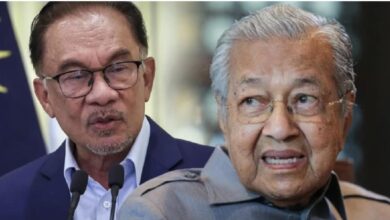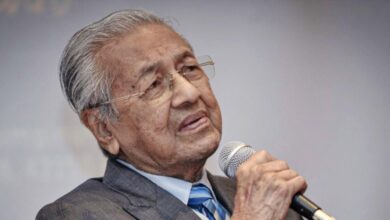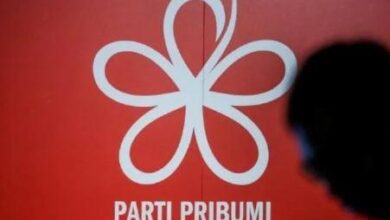Using ECRL to swing voter support for MCA, MIC?

Apparently, the Selangor state executive council has rejected the transport ministry’s proposal for the East Coast Rail Link to traverse a northern Selangor alignment.
The proposed route would have involved massive land acquisition in Selangor. Therefore, the state Exco’s approval was required.
At the centre of the ministry’s application is their preferred alignment for Section C of the ECRL. The route reads like this: Mentakab – Bentong – Janda Baik – Gombak – Rawang (Serendah) – Kapar – Port Klang – North port – West port.
Gombak, the alignment is planned to go back up north, passing through Selayang north-west to Serendah, before making a south westward journey towards Batu Arang, Kapar, Meru and Port Klang.
Eventually, it would connect to North port after which it terminates at West port.
It all sounds very complicated, right?
Political ploy
Yes, indeed, as the zig-zag alignment in the northern part of Selangor was coined by none other than the sole MCA minister in the cabinet (Wee Ka Siong) who is also the transport minister.
At first glance, this alignment appears fairly innocent. But according to a few political analysts in Selangor, the alignment will have effect on at least five parliamentary seats in Selangor, not to mention many state seats too.
Those seats are: Hulu Selangor (P94), Gombak (P98), Kapar (P109), Selayang (P97), and Klang (P110) as well as several state seats within those parliamentary constituencies.
The parliamentary seat of Bentong (P89) will be the main target and so will be the four state seats of Bilut (N33), Ketari (N34), Sabai (N35) and Pelagai (N36) within that constituency.
In this dubious plan, Gombak will be turned into the central ECRL station to serve Kuala Lumpur passenger traffic.
A local political pundit was quick to point out that it was not only a poor decision, as the northern alignment will cost a lot more, but it was also a crafted and calculated proposal to serve the hidden political agenda.
The analyst argued that Section C of the ECRL is a political ploy that is meant to swing back the voters of Bentong (MCA), Selayang (MCA), Hulu Selangor (MIC, Rawang state seat – MCA), Kapar (MIC) and Klang (MCA), to either MCA or MIC, in the next general election.
“These parliamentary and state seats were contested by either MCA or MIC, which all of them unfortunately lost badly,” he commented.
The loss of the Bentong parliamentary seat was rather tragic for MCA. Never before in the history of their party was a party leader defeated in what appeared to be a safe seat at that time.
Liow Tiong Lai, then MCA president, lost by 2,000 votes to a political novice from DAP despite an aggressive and concerted campaign assisted by none other than the Chinese ambassador at the time, who campaigned for him in Bentong.
Another political commentator said the Bentong annihilation of the MCA president left a bitter taste in their mouths.
As for the Gombak parliamentary seat, “I think we all know who the apprehensive MP is, at the moment. “He needs more than ECRL Central to win or a miracle to retain his seat,” quipped another analyst about this ex-PKR leader.
Selangor’s preference has been fairly consistent. ECRL represents a new opportunity for the less developed districts in the state to become more exposed, opened up and linked by rail to the east and west.
[VIDEO] Pendekar tewaskan Botak Chin dan Bentong Kali masih gagah
Cargo village
There are also opportunities for cargo villages or freight hubs to be set up in areas where underdeveloped land is still cheap and plentiful.
As the railway is linked to Port Klang, there would be opportunities for less congested roads and highways in Selangor to become a reality.
By having the rail to take over the long-haul logistics role, more roads would be freed of heavily laden vehicles. This approach would lead to less congested roads and highways in Selangor.
The rail could provide the much-needed capacity and seamless connectivity between the port and industrial areas in the state.
They therefore prefer the southern Selangor alignment, where more industries are located and less costly land is still available that could be turned into cargo villages or rail hubs.
Southern route
The decision for the southern alignment was decided by the previous Pakatan Harapan government.
Rather than cancel the ECRL, the PH government decided on a cost reduction strategy. ECRL could go ahead if the cost could be reduced.
The original northern route was considered too, which was supposed to terminate either at the Batu Caves KTM line or next to the last LRT station.
But the massive tunnelling works between Gombak, Janda Baik and Bentong would be too expensive and prohibitive, plus the difficulty in eventually linking it to Port Klang.
The southern route (Mentakab – Nilai – Putrajaya and then to Port Klang) represents a more friendly route and with easier terrain, fewer and shorter tunnels, thus lowering the overall costs too.
The lines could also be linked to KLIA, Cyberjaya and Putrajaya, making it more viable for these locations to grow commercially.
However, the transport ministry’s proposal departed greatly from the PH and Selangor government’s development and economic strategy.
With this latest rejection, ECRL Section C, is being sent back to the drawing board.
“Maybe Selangor Umno, who were busy at their annual assembly, would like to take note of what some people have been up to,” said another analyst. “Nobody wins in this tug-of-war when politics takes the centrestage,” he concluded.
https://mykmu.net/2018/04/24/ketua-amk-kapar-keluar-pkr-cabar-azmin-di-bukit-antarabangsa/




